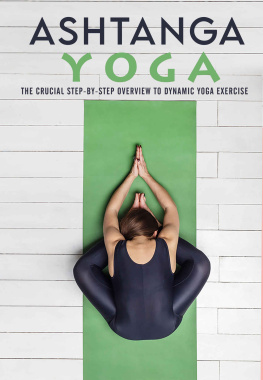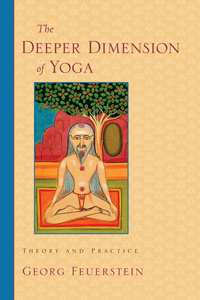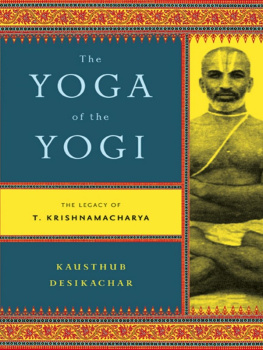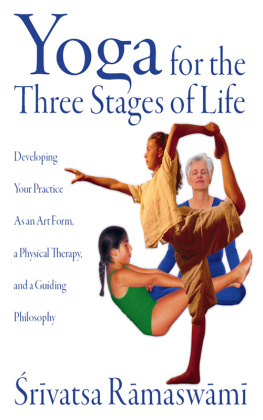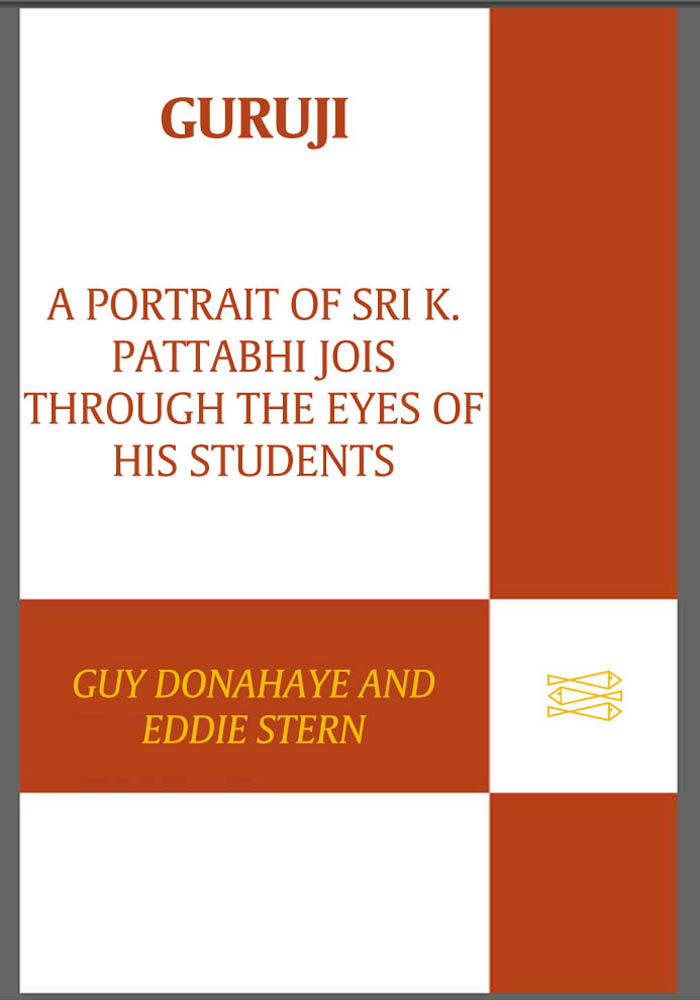Guruji

Guruji

A Portrait of
Sri K. Pattabhi Jois
Through the Eyes of His Students

Guy Donahaye and Eddie Stern
North Point Press
A division of Farrar, Straus and Giroux
New York

NORTH POINT PRESS
A division of Farrar, Straus and Giroux
18 West 18th Street, New York 10011
Copyright 2010 by Guy Donahaye and Edwin Stern
All rights reserved
Distributed in Canada by D&M Publishers, Inc.
Printed in the United States of America
First edition, 2010
Library of Congress Cataloging-in-Publication Data
Donahaye, Guy, 1962
Guruji : a portrait of Sri K. Pattabhi Jois through the eyes of his students / Guy Donahaye and Eddie Stern.1st ed.
p. cm.
ISBN: 978-0-86547-749-0 (alk. paper)
1. Jois, K. Pattabhi. 2. YogisBiography. I. Stern, Eddie, 1967II. Title.
RA781.7.D66 2010
613.7'046dc22
2010017755
Designed by Abby Kagan
www.fsgbooks.com
1 3 5 7 9 10 8 6 4 2
In loving memory of
Sri K. Pattabhi Jois
(19152009)
Yoga is showing where to look for the soulthat is all. Man is taking a human bodythis is a very rare opportunity. Dont waste it. We are given a hundred years to live; one day you have the possibility to see god. If you think in this way, it is giving you good body, good nature, and health.
Sri K. Pattabhi Jois, 2001
Contents
Preface
by Eddie Stern
My friend Harini, an Indian woman who lives in Mysore, shared a story with me that was told to her by a former neighbor, Doreswamy Iyengar, who had been an adviser to the maharaja of Mysore in the 1930s. One day Doreswamy came by with his sons. The sons, who had previously been stout, had slimmed down quite a bit, and Harini took note of it. You have become so fit! she said. They replied, Oh yes, we have been doing yoga. Doreswamy said to Harini, In the 1940s and 50s during Ram Navami [the nine-day worship of Lord Ram], there used to be stages set up all around Mysore for the musicians, poets, singers, and actors to perform. Pattabhi Jois and I lived on the same street. During the Ram Navami, he would get up on the stage and start doing all of the asanas. He would walk on his hands, jumping here and there, twisting, rolling, and turning circles. My friends and I used to say, What is this Pattabhi up to? He is jumping around like a monkey, what use is all this? We did not take him seriously then. But now we look at him and think, Look how great he has become, what knowledge and fame he has, what a great thing he has done to spread yoga all around the world. Yoga was here for us as part of our culture, but we did not even know its greatness until now. But Pattabhi never stopped holding on to its greatness.
Such inspiring stories remind us of the absolute dedication that Pattabhi Jois maintained toward ashtanga yoga beginning in 1927. Here in the West, we sometimes forget that yoga was not always a respected endeavor in India. In fact, yoga was looked upon by the general population as being a practice for either monks and renunciants or charlatans and sorcerers. When I went to India for the first time in 1988 with the intent to learn yoga, I was completely ignorant of the culture, geography, and basic ideas that gave birth to the Indian philosophies. My knowledge of yoga was scant. I assumed that all Indians knew yoga and was surprised to discover that most did not. Though there were many people of deep wisdom and devotion who embodied an overall gentleness, there were not many practicing yoga. By 1991, when Guy Donahaye and I began our studies with Pattabhi Jois in Mysore, yoga still had not achieved the cultural regard that it holds now both in India and in the West. When asked by Indians why I was in India, I would reply that I had come to learn yoga. Most would remark, Oh, yoga; very good for health. Of course, having good health is indeed a worthwhile, if not imperative undertaking for those in search of some type of spiritual understanding. But it was the spiritual quest, and usually not health, that was the driving impulse that led many of us Westerners to India.
In 1991, India had only just begun to allow Western exports into the country. Pepsi, Coke, and many other name brands and fast foods had not yet begun to pollute the countryside. Bottled water was not always easy to find, and a trip to the post office seemed to be a daylong affair, as was booking a long-distance telephone call or going to the bank to change money. Everything demanded time and patience, qualities we were unfortunately short on. Though I did not have the hardships of those who came in the 1970s, there were still a lot of adjustments. A hot-water bath was a complete luxury, e-mail did not yet exist, and Mysore still required several days of travel to reach from my home in New York City. The day-to-day challenges, however, were offset by the Indian people, who had a sweetness that was palpable. Not a day would go by without complete strangers inviting us to their homes for tea, a meal, or a three-day wedding.
The daily difficulties made the experience of being in India and studying yoga all the more valuable, as did the simplicity of the lifestyle and the recognition of how little we need materially to be happy. I relished the time I could spend there, with no idea that the near future would bring large crowds of yoga students to Mysore in 2002, after Gurujis new school opened in Gokulam. In the years before that, there were few students in Mysore; when the number reached twenty or twenty-four, we would think it unbearable; and when it would shrink to four or eight, we would feel that all was normal again.
One thing that set Pattabhi Joiss teachings apart from other yoga communities that had made their way westward, and which made the quest for information all the more challenging, was a lack of literature. B. K. S. Iyengar had written Light on Yoga, Paramahansa Yogananda penned Autobiography of a Yogi, and Swami Vishnu-devananda had The Complete Illustrated Book of Yoga. We only had the firsthand experience of Pattabhi Joiss few English words, and his fearsome hands that put us into positions we would otherwise have chosen not to attempt. Due to his limited English, everything was broken down to its simplest equationand perhaps thats what we, as largely overintellectualized Westerners, needed; mula bandha was simply Tighten your anus! Instructions on breathing were, Breathe freely! Queries on almost any subject could be answered with, Take practice, all is coming! In Kannada, his mother tongue, Pattabhi Jois could passionately relate the yoga texts, philosophy, mythology, and stories of the sages and rishis in such a way as to bring tears to his eyes. But in English, there was a large language barrier.
Pattabhi Joiss instructions, therefore, became something of a treasure hunt. If I put the effort in and researched what he was talking about, I could discover what he was trying to convey. If he mentioned a quotation from a particular book, I would take it as a cue to look for that book and read it. Finding the verse, of course, was another story. The attempts made, though, were always rewarded in one way or another. In fact, it is in the nature of the Indian tradition that the student should strive to understand the teacher, for in striving, and not from being spoon-fed, is knowledge revealed. The yoga texts note that the teacher can show you what to do and how to do it, but the student must fill in his or her own experience by constant, dedicated practice.



